"Dozens of dollars? Or hundreds of dollars? Why can the price of cutting a piece of 'transparent plastic sheet' be 10 times different?"
You may be planning to make a beautiful acrylic display stand, a unique sign, or a transparent part for a DIY project. You go to ask for a quote with great interest, but you are confused: at the hardware store on the street, the clerk tells you that you can cut a board they call "plexiglass" for dozens of dollars; but when you contact a professionallaser cuttingfactory or custom service provider, the number on the quotation easily jumps to hundreds of yuan.
This huge price gap cannot be explained by simply "size multiplied by unit price".
You can't help but ask:What is thecost of cutting acrylic?Are professional service providers asking for sky-high prices? Or is there something fishy about the cheap goods in the hardware store? The truth is that behind the seemingly simple term "acrylic", thegrade of the material itself, the precision of the processing method, the added value of the service, and the guarantee of the final effect together constitute this amazing spectrum of cost differences.
If you choose a few dozen "plexiglass" blocks, you may get a basic material that is prone to yellowing, easy to break, and rough in precision; while a few hundred professional laser cutting means high-purity raw materials, complex contours accurate to the millimeter, mirror-smooth cutting effects, professional drawing processing and post-process protection services.
So the question isn't, "How much does it cost to cut acrylic?" The question is, "What do you really need?"A makeshift plastic? Or a precise, beautiful, and durable custom piece? Understanding the cost difference will help you get your money's worth.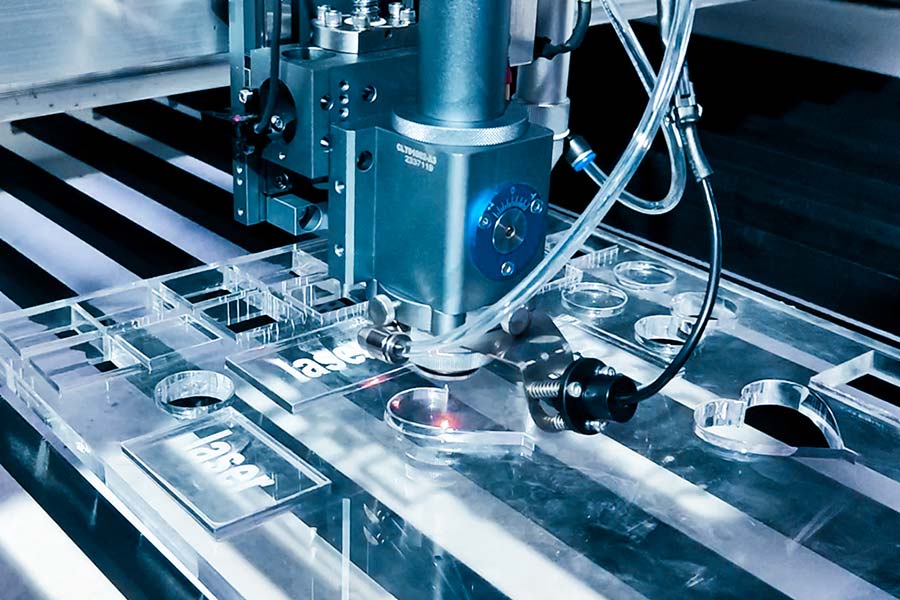
Quick Check Table Of Key Factors And Options That Affect The Cost Of Acrylic Sheets
| Factors | Low-cost options | High-cost options | Description |
|---|---|---|---|
| Material type | Extruded acrylic | Casting acrylic | This is the basis for cost differences. Extruded grade production is continuous, efficient, and has low raw material costs. Casting grade has complex processes, long cycles, high raw material requirements, better physical properties (heat resistance, chemical resistance, optics, dimensional stability), and less deformation after processing. |
| Processing method | Retail store sawing (linear saw/table saw) | CNC routing or laser cutting | This is the key cost point to achieve the design. Manual sawing is fast, the equipment is simple, and the labor requirements are low. CNC/laser requires programming, the equipment is expensive, the running speed is relatively slow (especially complex graphics), the accuracy is high, and it can handle complex shapes. |
| Complexity | Simple rectangular/straight shape | Complex curves, internal holes, engraving | Complexity directly affects the processing time and method. Simple shapes can be quickly completed by hand sawing. Complex shapes must be cut using CNC or laser, and the more complex the design, the longer the cutting path, the more time consuming and likely to produce more waste. Engraving is an additional processing step. |
| Edge Quality | Rough, saw marks (after cutting) | Flame polishing, diamond polishing | This is a post-processing cost. Low-cost options are usually delivered after cutting, and the user needs to polish the edge themselves or accept the roughness. High-cost options include professional edge processing: flame polishing instantly melts the edge to become transparent and smooth; diamond polishing uses machinery and abrasives to achieve a mirror effect. Both require additional equipment, labor time and skills. |
This guide takes you through all the variables that influence the price ofacrylic cutting, from material selection to process comparisons, and through a real-life example of when you should look beyond ‘cutting’ and consider more cost-effective manufacturing options, such asinjection molding.
Here’s What You’ll Learn:
- Five core cost variables – disassemble the quotation with an engineer’s mindset and pinpoint the hidden factors that affect the price (material, thickness, process, design, quantity).
- Casting grade vs. extrusion grade:material showdown – why is the cost 50% different? A full comparison of optical performance, processing difficulty, and applicable scenarios.
- Retail sawing vs. laser/CNC:process showdown – the cost and precision gap between “rough cuts” and “precision parts”.
- The mystery of the sky-high price of acrylic for aquariums – an in-depth analysis of how thickness,polishing, and safety redundancy drive up costs.
- Actual combat case:Evolution from $30 to $4 – how a display stand can achieve a cliff-like drop in cost by switchinginjection molds.
- Critical point:When to give up cutting? – A 4-item self-checklist to determine whether your project should switch to injection molding.
- FAQ –Acrylic pricerange, cutting quote differences, project cost estimation tips (with real data).
Why Trust This Guide? We Understand More About Plastics Than The Surface
Hi, I’m Gloria, a material application engineer at LS.Every day when I walk into the workshop, the air is filled with the unique “smell” of various thermoplastics - this is not a romantic perfume, but our real workplace. At LS,custom injection moldingis our core, and one of the materials I handle the most is the seemingly ordinary but challengingacrylic (PMMA).
To be honest, our understanding of acrylic is really more than its crystal clear surface. Its high light transmittance, excellent weather resistance and stiffness are indeed attractive, but its “temperament” - such as relative brittleness, easy scratching, heat sensitivity (heat deformation temperature of about 80°C), and the demanding requirements for temperature, pressure, and mold design during processing - are the key to our engineers’ precise grasp every day.We know when a simple acrylic cutting board can do the job perfectly, and we know even more clearly when onlyinjection molded partscan truly play their advantages and achieve the best performance and cost structure.
Let’s take a recent example. A customer initially used expensiveCNC machiningto make prototypes and small batches of acrylic transparent shells, with high unit costs and limited efficiency. We carefully evaluated their design (e.g. wall thickness uniformity, snap-on structure), annual demand (targeting hundreds of thousands of pieces), and performance requirements (light transmittance, chemical resistance). The conclusion was clear:turning to injection molding was the only way. Our team was deeply involved, from optimizing product design for easy demoulding, to selecting the most suitable PMMA grade, to the design and commissioning of precision molds, every link was infused with our deep understanding of this material. The end result? The customer successfully achieved large-scale production of hundreds of thousands of pieces per year, with a significant reduction in unit costs and significant improvement in product quality and consistency.This practical leap from "1" prototype to "100,000+" mass production allows us to provide much more than a simple quotation. What we share is strategic advice based on real manufacturing experience that can last throughout your product life cycle.
So, when you are considering an acrylic application, whether it is a simple sheet or a complexinjection molded part, why not talk to us. We understand the nature of materials and how to turn them into advantages for your products. After all, at LS, making the most of plastics is what we do every day.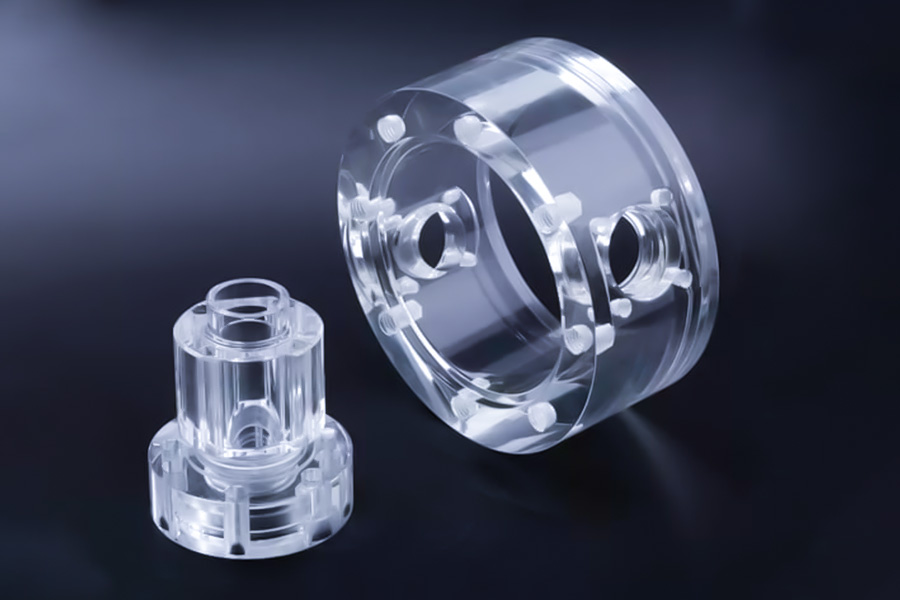
Price Anatomy: 5 Core Factors That Determine The Cost Of Acrylic Cutting
"Let's break down the final quote into several key variables like engineers do." The final quote foracrylic productsdoes not come out of thin air, it is the result of a precise combination of multiple quantifiable factors. Understanding these variables, you can more accurately predict and control costs.
List of core factors of acrylic cutting price
| Core factors | Cost impact trend | Key features |
|---|---|---|
| Material type and grade | Casting grade > Extrusion grade | Casting grade is 30%-50% more expensive, with better optical and processing performance |
| Sheet thickness | Non-linear growth | 10mm price is much higher than 5mm sheet twice |
| Processing complexity | Complex design > simple straight line | Each additional hole/curve/inner angle increases programming and machine time |
| Processing technology | Technology determines cost and effect | Laser cutting: bright edge but limited thickness; CNC: thick plate/3D processing, frosted edge |
| Order quantity | The larger the batch, the lower the unit price | Single-piece customization has high setup cost, and batch production dilutes the cost |
The finalquote for acrylic cuttingdoes not come out of thin air. It is precisely composed of five key variables:
Material Type & Grade:The core of the basic cost. Cast-grade acrylic is usually 30%-50% more expensive than extrusion-grade acrylic due to its excellent optical clarity, chemical resistance and processing stability. Extrusion-grade acrylic has lower costs, but may be more prone to stress or deformation during processing, which is suitable for some less demanding applications.
Sheet thickness:Cost growth is nonlinear. The cost ofraw materialsincreases significantly with thickness (for example, the cost of a 10mm sheet is much higher than the sum of two 5mm sheets). In terms of processing, thick sheets require slower cutting speeds, higher power or special equipment (such asCNC routing machines), which further increases costs.
Processing complexity:Design determines time and loss. Simple straight-line cutting is the most efficient and the lowest cost. Each additional hole, complex curve or sharp inner angle means more time-consumingCAD/CAM programming, more cautious path planning (to prevent overheating/cracking), longer actual machine running time and possible increase in scrap rate.
Processing technology (Technology Used):Process selection affects efficiency and effect cost. Laser cutting is fast, and the edge has a "flame polishing" effect (bright and smooth) of high-temperature melting, but it is limited by laser power and is usually good at medium and thin plates (such as ≤20mm).CNC routing cuttingcan easily handle heavy plates and can perform 3D processing such as chamfering and grooving, but the cutting edge is frosted. If a bright effect is required, an additional polishing process is required, which increases the cost.
Order quantity (Quantity):The scale effect is significant. Single-piece or small-batch customization requires the sharing of high fixed costs (programming, machine setting, material clamping, first-piece inspection). As the number of orders increases, these fixed costs are diluted, and the processing cost of a single part is greatly reduced.
Acrylic cutting quotesare the result of the interaction of material properties, physical specifications, design difficulty, process selection and order size. Understanding these five variables - from material thickness to design details to production quantity - is like an engineer disassembling a system, making pricing logic transparent, helping you accurately control costs and optimize purchasing decisions.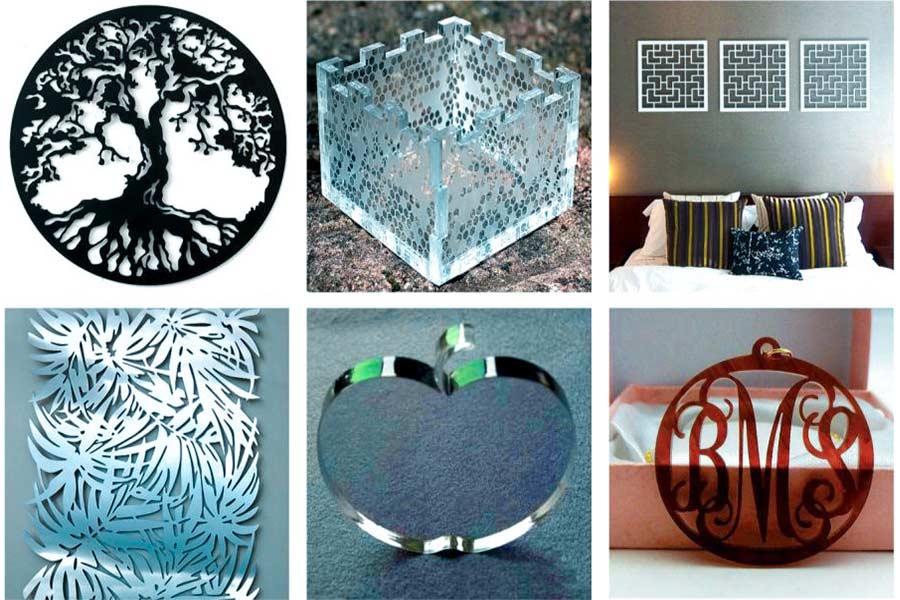
Materials Showdown: Cast vs. Extruded Acrylic
The twotypes of acrylicyou see online have vastly different costs and uses.
| Comparison Items | Cell-Cast Acrylic | Extruded Acrylic |
|---|---|---|
| Optical transparency | Very high, close to glass, best light transmittance | Slightly inferior, may have slight turbidity or streaks |
| Chemical resistance | Excellent, more resistant to chemical corrosion | Good, but lower than casting grade |
| Machinability | More suitable for laser cutting, engraving, drilling (not easy to melt and crack) | Easy to melt or crack (caused by internal stress release during processing) |
| Hot bending formability | Can be hot bent, but requires more precise control | More suitable for hot bending (lower softening temperature, better ductility) |
| Thickness tolerance | Large (±5%-10% common) | Very uniform (within ±3%-5%) |
| Internal stress | Low (slow casting cooling process reduces stress) | Higher (fast extrusion cooling process causes residual stress) |
| Price | Higher (high production cost and long cycle) | Lower (high continuous production efficiency) |
| Key application scenarios | High-end display items, aquariums, precision parts, signs, applications requiring excellent optics/chemical resistance | Light boxes, protective covers, signs, simple hot-bending products, cost-sensitive large-area applications |
| Aquarium applicability | The only choice (strength, weather resistance, water resistance requirements) | Not recommended (long-term water pressure and stress can easily lead to cracking) |
Summary of core differences:
Quality vs. cost:Casting grade pursues the highest optical and physical properties (high-end applications); extrusion grade optimizes cost and efficiency (high-volume/cost-sensitive applications).
Processing tendency:Casting grade is more suitable for cold processing (cutting, engraving,milling); extrusion grade is more suitable for hot forming (bending, blistering).
Stress issues:The internal stress of extrusion grade is the main reason for its easy cracking during processing and failure in long-term applications (such as aquariums).
Tolerance control:Extrusion grade has a significant advantage in thickness uniformity.
Selection advice:
Choose casting grade:When you need the highest clarity, best chemical resistance, excellent machinability (especially laser cutting), make aquariums, or have extremely high requirements for long-term durability, even if the price is higher and the thickness tolerance is slightly larger, it is worth it.
Select extrusion grade:When the budget is limited, a large area of uniform sheet is required, hotbendingis mainly performed, the optical requirements are not extremely demanding (such as ordinary light boxes, signs, protective covers), and the application environment does not involve high stress or long-term liquid pressure.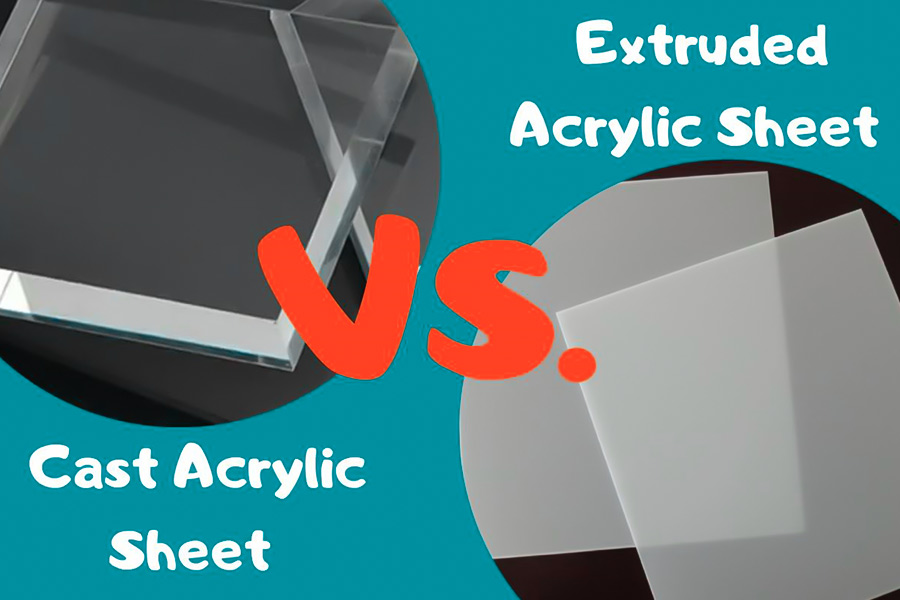
Craft Showdown: Retail Sawing vs. Professional Laser/CNC Cutting
"Are you looking for a 'similar-size board' or a 'precision part'?"
| Comparison Dimensions | Retail store sawing (such as Home Depot, Lowe’s) | Professional laser/CNC cutting |
|---|---|---|
| Processing equipment | Simple table saw, handheld circular saw, etc. | Computer-controlled laser cutting machine or CNC engraving machine |
| Accuracy | Low precision (error often reaches ±1-3mm) | Ultra-high precision (±0.1mm, up to micron level) |
| Edge quality | Rough, burred, possible edge collapse | Smooth and flat (semi-transparent polishing effect of laser cutting edge) |
| Complex shape realization capability | Limited to simple straight line cutting | Any complex two-dimensional shape (hollow, curve, fine text pattern can be realized) |
| Material damage risk | High (prone to micro cracks, stress cracking, especially for extrusion-grade acrylic) | Very low (non-contact processing, controllable heat-affected zone) |
| Speed | Fast (single cutting) | Medium (programming + cutting is required, but batch production is efficient) |
| Cost | Very low (charged by the number of cuts, a few dollars/time) | High (design fee + startup fee, calculated by labor hours/material area) |
| Design input requirements | No documents are required, dimensions are communicated on site | Vector CAD files (such as DXF, AI, SVG formats) are required |
| Applicable scenarios | DIY simple brackets, temporary props, rough processing without precision requirements | Precision models, signs, electronic panels, art installations, customized parts |
| Typical users | Personal DIY enthusiasts, temporary emergency needs | Designers, engineers, professional manufacturers, maker studios |
Summary of major differences:
(1) Accuracy and quality:
Retail sawing ≈ "approximately even" (minimum size requirements)
Laser/CNC = "exact reproduction" (precise re-creation of design specifications)
(2) Capability limitations:
Retail sawing: limited to straight cuts, effectively "cutting boards"
Laser/CNC: freeing up complex designs, effectively "production of parts"
(3) Hidden costs:
Low-cost cutting at retail can be included in material waste (re-buying as a result of poor cutting) or secondary processing cost (edges grinded)
The initial cost of laser/CNC has the design value and does not have rework assurance
Recommendations for selection:
(1) Choose retail shop cutting when:
You need to buy a square/rectangularacrylic sheet"in a hurry and cheaply" and meet any of the following conditions:
- Edges are going to be covered or subsequently polished
- Accuracy error ≥ 2mm
- Applied to low-demand applications that are non-load bearing or have (e.g., pads, temporary cases)
(2) Choose laser/CNC cutting when:
You need "precision + high-quality" parts and meet any of the following:
- Edges need to be directly exposed to view (light boxes, signs)
- Assembly interfaces where tight fit is needed (instrument panels)
- Design includes complex features such as curves, hollowing, text, etc.
- Material is more expensive (tolerance cost > processing fee)
Why Is Acrylic For Aquariums So Expensive?
Indeed,aquarium acrylicis another breed of 'beast'. Behind the expensive price lies a strict manufacturing logic.
Key reasons why aquarium acrylic is so expensive:
(1) Casting grade acrylic (Cell-Cast) must be employed:
- Challenging process and costly:Castingis a time-consuming process (it takes days/weeks to polymerize), high in energy consumption, and low yield.
- Irreplaceable performance:Only casting grade can provide:
- Ultra-high strength and toughness:Resistant to gigantic water pressure and inadvertent collision (impact strength is significantly greater than that of extruded plates).
- Good resistance to stress cracks:Immune to fatal cracks under long-term water pressure.
- Highest optical purity:Over 92% transmittance, immune to yellowing under long-term usage, and better ornamental value.
- Extruded plates are prohibited:Although extruded plates are cheap, they lack strength, are not hard to break, and are highly susceptible to cracking, and are extremely unsafe to use in aquariums.
(2) Exorbitantly excessive thickness requirements, exponentially greater costs:
- The pressure of water is gigantic, especially in medium and large aquariums (pressure increases exponentially with depth).
- The thickness required is normally 15mm, 20mm, 30mm or even more.
- Material cost is in proportion to volume (length x width x thickness). As thickness increases slightly, material usage and cost increase exponentially.
- Cost and effort involved in cutting, transporting, and processing thick plates also increase significantly.
(3) Edge processing requires accuracy at the extreme:
- Bonding is founded on chemical bonding (solvents break down theacrylic surfaceto melt and harden), unlike normal adhesive bonding.
- The bonding surface must be totally flat, smooth and fault-free, or it will leak or break.
- This can be achieved by:
AccuracyCNC cuttingand machining.
A number of diamond polishing (labor and time-consuming, using highly skilled manpower).
It is extremely expensive for thick and big plates.
(4) Redundancy of safety is essential:
Honourable design is far more than the theoretical minimum number of thicknesses.
Long-term water pressure, material aging, stress concentration, unforeseen influences, etc., need to be factored in.
Apply a significant safety factor (usually 1.5 times or more), and thicker plates are recommended.
This section of the "extra" cost is needed to ensure absolute safety and reliability for decades so that cataclysmic leaks can be prevented.
The high cost of aquarium acrylic is due to the premium level of materials (casting), high material consumption (thickness is great), stringent processing technology (diamond polished edges) and no-compromise redundancy in safety. The cost is bargained against the capacity to hold water pressure, unparalleled transparency and long-term peace of mind, which really is a "value for money" professional solution.
Practical Case Study: The "Evolution" Of A Product Display Stand
Project background:A new startup company needed to create 50 nice retail display stands for their new smartwatch.
Initial solution (small batch):
The customer initially used an online laser cutting service.
Solution: Cut the intended acrylic parts and hand-glue and assemble them.
Pain point: The cutting and material cost of each display stand is around $30. More importantly, hand gluing produces tedious labor, unstable yield (uniformly variable quality), glue residue, and poor structural strength. This is an issue for retail displays that target brand image and reliability.
LS's intervention and optimization solution (boosting batches to 2,000):
When the customer planned to increase production to 2,000 units, we analyzed their cost structure and quality challenges.
Our expert advice:After evaluating production capacity and product requirements, we recommended and implemented aninjection molding solution.
Solution's essence:Spend a one-time initial mold amount of around $5,000. When the mold became available, the injection molding expense per display stand was only $4.
Key value points:Theinjection molding processcan produce the display stand body in one piece, completely eliminating glue marks, and greatly improving the structural strength and appearance consistency (flawless).
Significant results:
The cost break-even point was achieved quickly:Calculation analysis shows that when production of the 193rd display stand was initiated, the total cost of using the injection molding solution (including sharing of the mold) was the same as the total cost of ongoing use of the cutting + gluing solution.
Economic benefits of scale:Through the process of producing all 2,000 orders, the customer not only recovered the mold investment, but gained enormous total cost savings due to the extremely low unit price ($4 vs. $30).
Quality leap:The customer also obtained an excellent-quality product with enhanced strength and flawless appearance (one-piece molding, no glue seams), greatly strengthening the brand image and end-user experience in the store.
This illustration shows plainly how LS can allow customers to win a "win-win" with increased production by expert selection and evaluation of manufacturing processes: significantly reducing unit costs and heavily improving product quality and consistency. Choosing a suitable production method for batches (such as injection molding) can instantaneously dilute the original capital investment with high-volume production, yielding overall benefits much higher than traditional methods. This is exactly the value to which LS is committed to providing customers - turning your product ideas into high-quality, cost-effective realities using the best manufacturing practices.
FAQ - Quick Questions And Answers On Acrylic Cost
1. So, how expensive is acrylic?
Acrylic prices range widely, depending on thickness, material type (extruded or cast), size, and application scenario. For example, 3mm extruded sheet commonly used by DIY enthusiasts costs around tens of dollars per square meter (about $50-100), which is economical; while 50mm cast sheet for professional use such as large aquariums may cost up to thousands of dollars per square meter ($2000-5000+) because the casting process is more complicated and the material is more durable. Prices are also affected by market supply and demand and suppliers, and the overall span varies greatly from low-end to high-end. It is recommended to check real-time quotes based on specific specifications to ensure accuracy.
2. How much does it cost to cut a piece of plexiglass?
Thecost of cutting plexiglass(the trade name for acrylic) varies depending on the complexity of the cut and the type of service. Cutting a simple rectangle at a retail store such as Home Depot only costs a few dollars in service fees (excluding material costs). But precision laser cutting for complex parts (such as designs with multiple holes and curves) may cost $20-$100, depending on the design details, cutting time and equipment usage costs. For example, a part with 10 holes and curves is about $50, while a simple shape is only $5. Laser cutting has high precision but high costs. It is recommended to provide a design drawing to get a customized quote to optimize costs.
3 How to estimate the cost of my project?
The best way to estimate the cost of a project is to bring your design drawing (even a manuscript) to contact us for evaluation. We will provide a preliminary quote based on the complexity of the design, material requirements (such as acrylic type and thickness) and process. At the same time, we will analyze at which production volume it is more cost-effective to switch to injection molding (for example, injection molding is cheaper and more efficient when the batch exceeds 1,000 pieces) to help you optimize cutting your budget. Early consultation can avoid overspending later, and we usually provide free preliminary estimates so that you can make decisions quickly.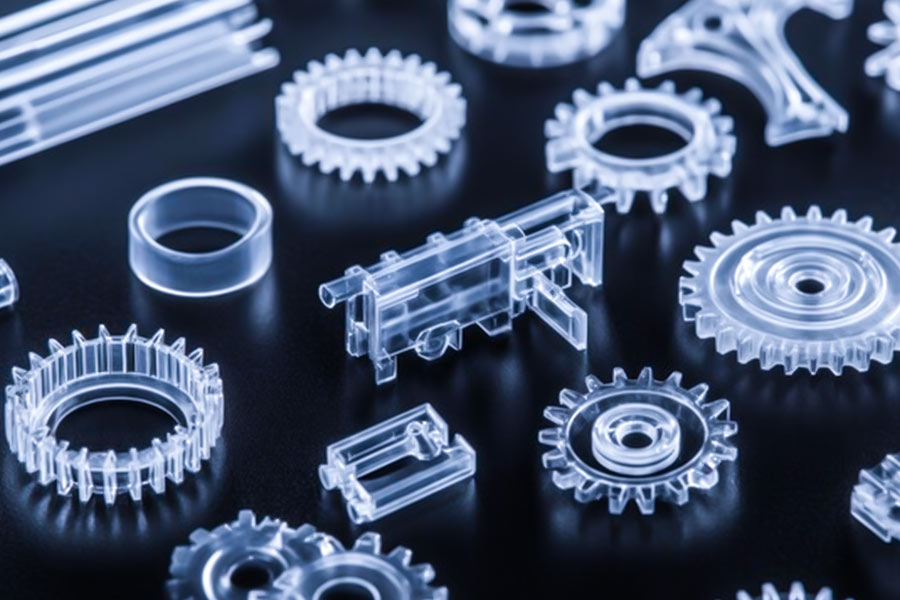
Summary
The cost of cutting acrylic is dynamic, depending on yourmaterial selection, design complexity, and quality requirements. For prototypes and small batches, it is an ideal choice due to its flexibility and low cost. However, when product demand grows, continued cutting may lead to excessive unit costs. At this time, "graduation" to injection molding becomes a key strategic decision to control costs, improve quality, and achieve scale.
Let LS guide your manufacturing optimal path
Whether you need to cut a single piece of acrylic or plan to mass-produce plastic parts, LS can provide professional support:
👉 Upload your design files now!
Get a transparent and competitivecutting quote.
Get professional engineering advice to help you make a wise cost-effective choice between "cutting" and "injection molding".
Get a transparent preliminaryinjection molding priceassessment for free to plan ahead for scale-up.
LS is your trusted manufacturing and engineering partner to help you succeed fromprototypeto mass production!Act now to unlock the best solution.
📞Tel: +86 185 6675 9667
📧Email: info@longshengmfg.com
🌐Website:https://lsrpf.com/
Disclaimer
The contents of this page are for informational purposes only.LS seriesThere are no representations or warranties, express or implied, as to the accuracy, completeness or validity of the information. It should not be inferred that a third-party supplier or manufacturer will provide performance parameters, geometric tolerances, specific design characteristics, material quality and type or workmanship through the LS network. It's the buyer's responsibilityRequire parts quotationIdentify specific requirements for these sections.Please contact us for more information.
LS Team
LS is an industry-leading companyFocus on custom manufacturing solutions. We have over 20 years of experience with over 5,000 customers, and we focus on high precisionCNC machining,Sheet metal manufacturing,3D printing,Injection molding,Metal stamping,and other one-stop manufacturing services.
Our factory is equipped with over 100 state-of-the-art 5-axis machining centers, ISO 9001:2015 certified. We provide fast, efficient and high-quality manufacturing solutions to customers in more than 150 countries around the world. Whether it is small volume production or large-scale customization, we can meet your needs with the fastest delivery within 24 hours. chooseLS technologyThis means selection efficiency, quality and professionalism.
To learn more, visit our website:www.lsrpf.com





